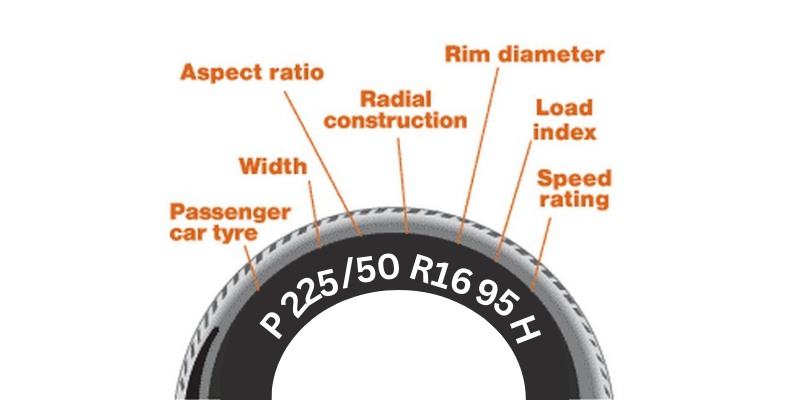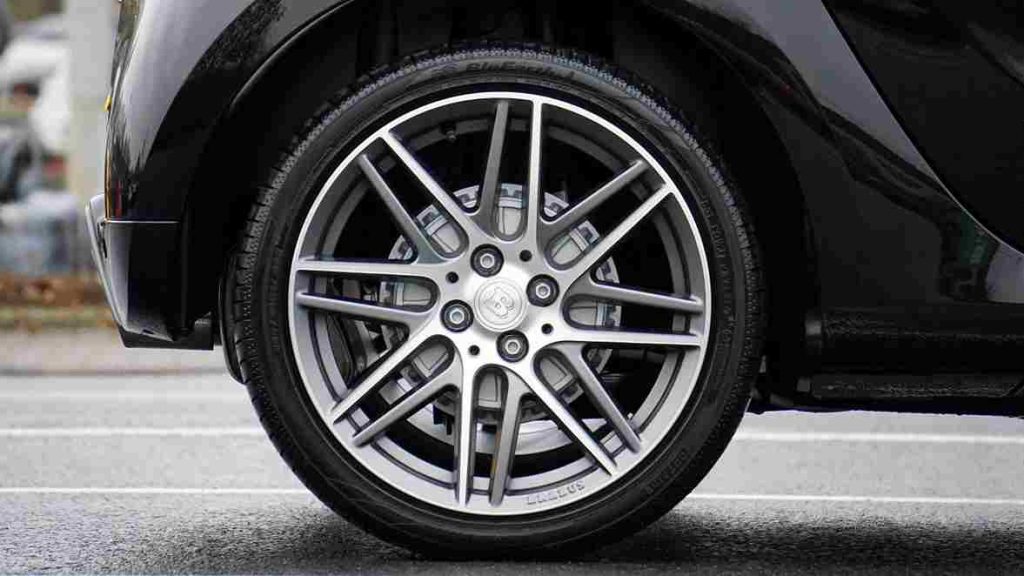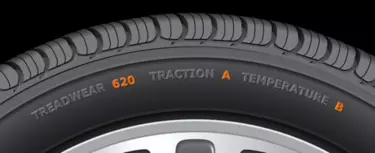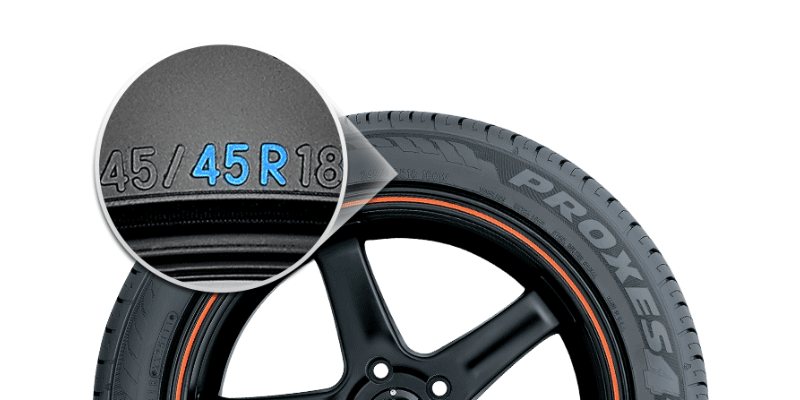As a car owner, you have probably noticed the various markings on the tyre sidewalls of your vehicle. Tyre markings vary depending on the manufacturer and the type of tyre, but they typically include a combination of letters, numbers, and symbols.
These markings contain important information about your vehicle tyre size, type, and performance capabilities. Deciphering these markings can be daunting, but it’s essential to familiarize yourself with them to make informed decisions when purchasing tyres or checking their condition.
So, whether you’re a seasoned driver or a new one, understanding tyre markings is crucial for your safety and the longevity of your tyres. In this article, we will take a closer look at what the markings on your tire sidewalls mean.
Tyre sidewall marking mean

There are different types of tyres available with different sidewall markings available in the market. If you want to know what is the meaning of those numbers then you are at the right post. Following is the hidden information which you have seen on your tyre sidewalls:
Tire Size
The first set of markings on your tyre sidewall indicates the tyre’s size. The size is usually expressed in a code that looks something like this P225/50R16.

Let’s explain it: “P” stands for “passenger car.” This means that the tire is designed for use on a passenger car, rather than a truck or SUV.
“225” is the tyre width in millimetres. In this case, the tire is 225 millimetres wide.
“50” is the aspect ratio, which is the height of the sidewall as a percentage of the tyre’s width. So, the sidewall of the tyre is 50% as tall as the tyre is wide.
“R” indicates that the tire is of radial construction, which is the most common type of tire construction.
“16” is the diameter of the wheel that the tyre is designed to fit, in inches.
Load Index
The load index is another important marking on the tyre sidewall. It indicates the maximum weight that the tyre can support when inflated to the proper pressure.
Load index codes range from 71 to 110 with each number representing a specific weight capacity. For example, a tire with a load index of 91 can support a maximum weight of 1,356 pounds.
Speed Rating
The speed rating indicates the maximum speed that the tyre is designed to handle. Speed ratings range from Q (99 mph) to Y (186 mph), with each letter representing a specific speed range.
For example, a tyre with a speed rating of H can handle speeds of up to 130 mph. It’s important to note that the speed rating only applies to tyres that are properly inflated and in good condition. Driving at high speeds on underinflated or damaged tyres can be dangerous.
Treadwear Rating

The treadwear rating is a measure of how long the tyre is expected to last. The rating is expressed as a number. The higher numbers indicate longer wear. A tyre with a treadwear rating of 500 should last twice as long as a tyre with a rating of 250.
It’s important to note that treadwear ratings are only useful for comparing tyres of the same type and size. A tyre with a higher treadwear rating may not necessarily be the best choice for your vehicle if it doesn’t meet your other performance needs.
Traction Rating
The traction rating indicates how well the tyre can grip the road in wet conditions. Traction ratings range from AA (the highest rating) to C, with each letter indicating a specific level of traction.
A tyre with a higher traction rating will be better able to handle wet roads which can be particularly important for drivers who live in areas with heavy rainfall.
Temperature Rating
The temperature rating indicates how well the tyre can dissipate heat and maintain its structural integrity at high speeds. Temperature ratings range from A (the highest rating) to C, with each letter indicating a specific level of performance.
It’s important to choose a tyre with a temperature rating that is appropriate for your driving style and needs. Driving at high speeds on tyres with a low-temperature rating can cause the tyres to overheat. It can lead to blowouts and other dangerous situations.
Conclusion
Understanding the markings on your vehicle tyre sidewalls is essential for choosing the right tyres for your vehicle and ensuring that they are safe to use. There may be other information on your tyre sidewalls such as the date of manufacture, brand name and any additional certifications or warranties. It’s a good idea to familiarize yourself with all of this information and to keep it in mind when shopping for new tyres.
When you want to replace your tyres, it’s important to choose tyres that are appropriate for your vehicle and your driving needs. Factors to consider include your climate, the type of driving you do (such as highway driving or off-roading) and your budget. You may also want to consult with a professional tyre dealer or mechanic to get their expert opinion on the best tyres for your vehicle.
FAQs
What do the load index and speed rating markings mean?
The load index and speed rating markings indicate the maximum load capacity and speed that the tyre can handle. The load index is a number that corresponds to the maximum weight that the tyre can carry. While the speed rating indicates the maximum speed at which the tyre can be safely driven.
How do I determine the manufacturing date of my tyre?
The manufacturing date of your tyre is indicated by a four-digit code on the sidewall. It is usually located near the edge of the rim. The first two digits indicate the week of the year that the tyre was manufactured, while the last two digits indicate the year.
What is the difference between the DOT code and the ECE code?
The DOT code is a four-digit code used in the USA to indicate the manufacturing date of the tyre, while the ECE code is a three-digit code used in Europe to indicate the tyre’s type approval and manufacturing location.
Do you use tyres with different speed ratings on your car?
It is not recommended to use tyres with different speed ratings on your car. The speed rating is an important safety factor and using tyres with different ratings can affect the handling and stability of your vehicle.
How often should I check the markings on my tyres?
It’s a good idea to check the markings on your tyres regularly. Especially when purchasing new tyres or checking the condition of your current tyres. It’s also important to check the markings if you notice any changes in your vehicle’s handling or performance.
What should I do if I’m not sure about the markings on my tyres?
If you’re not sure about the markings on your tyres, you can consult your vehicle’s owner’s manual or contact a reputable tyre dealer for advice. It’s essential to ensure that you have the right tyres for your vehicle and driving conditions to ensure your safety and the longevity of your tyres.
